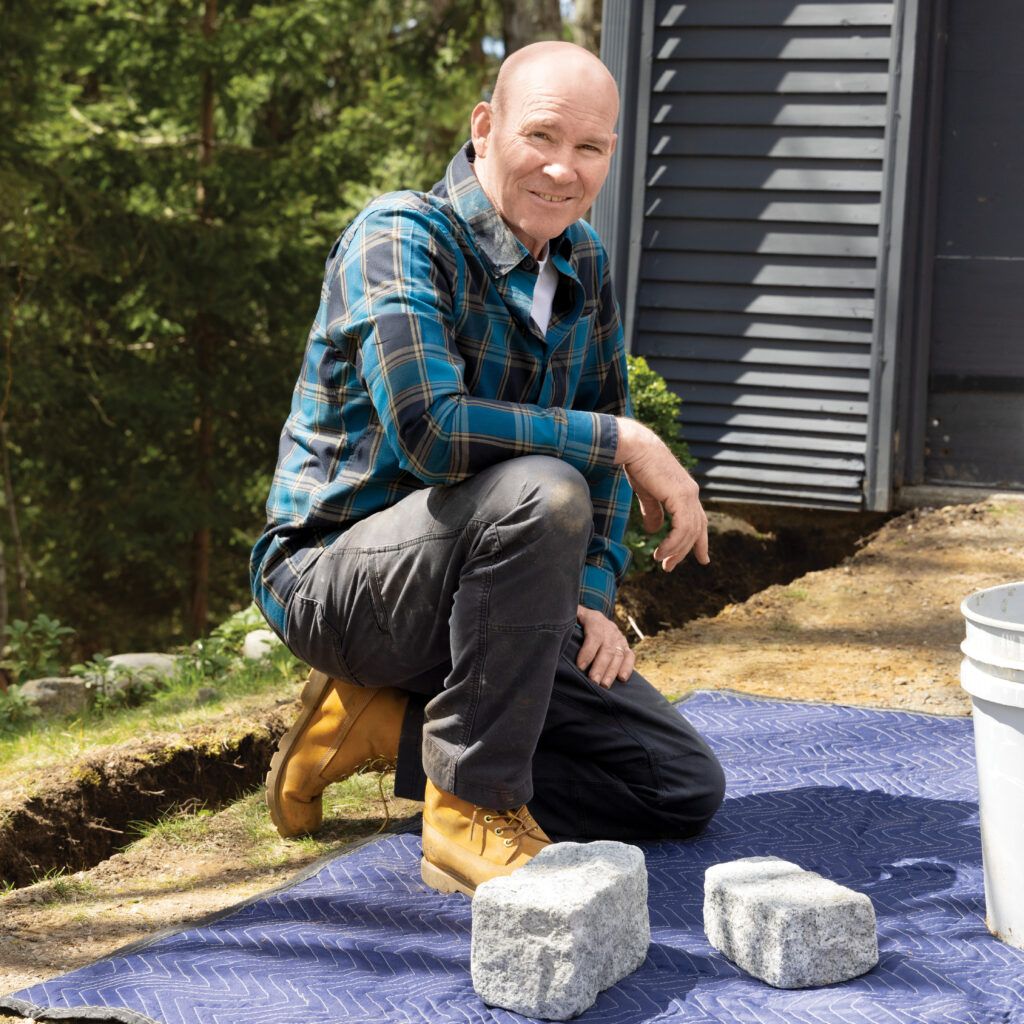Asphalt driveways are durable and long-lasting, withstanding decades of use and extreme weather conditions. With proper installation and maintenance, an asphalt driveway can increase your home’s curb appeal and provide a smooth surface for various activities. Our guide walks you through the process of building and maintaining an asphalt driveway, from planning and installation to ongoing care and troubleshooting common issues.
Pros and Cons of Asphalt Driveways
Before undertaking an asphalt driveway project, learn about the pros and cons to help you make sure it’s the right choice for your home.
Advantages of Asphalt Driveways
- Is generally less expensive than concrete
- Can last 15-20 years with proper maintenance
- Small cracks and divots can be easily filled and repaired
- Can withstand freeze-thaw cycles without cracking, making it ideal for colder climates
- Can be installed relatively quickly compared to other materials
Disadvantages of Asphalt Driveways
- Can absorb and radiate heat because of its dark color, potentially increasing cooling costs in warm climates
- Typically only comes in one color
- Requires periodic sealing to maintain appearance and durability
- Can soften slightly in very high temperatures
- Oil and gasoline spills can leave permanent marks if not cleaned promptly
Planning Your Asphalt Driveway Project
Once you’ve decided you want to install an asphalt driveway, this section will guide you through the steps to prepare for your project.
Assessing Your Property
Before installation, evaluate your property to make sure it’s suitable for an asphalt driveway:
- Assess drainage patterns to prevent water pooling.
- Check local regulations and obtain necessary permits.
- Check the slope and grade of your property.
- Identify any underground utilities that may need to be relocated.
Budgeting for Your Driveway
Asphalt driveway costs can vary depending on several factors:
- Local labor costs
- Site preparation requirements
- Size of the driveway
- Quality of materials used
On average, expect to pay between $7 and $13 per square foot for a new asphalt driveway installation.*
*Cost information based on 2024 reports from Angi and Asphalt Industrial.
Anatomy of an Asphalt Driveway
Blacktop is a combination of liquid asphalt and small-stone aggregate—sometimes with additives for strength, flexibility, and water resistance. Whether you’re replacing asphalt or installing it for the first time, it pays to understand what goes into a proper installation.
A) Subgrade: For a new driveway installation, the site should be excavated deep enough to match the thickness of the driveway’s components. We’re using 12 inches here, but the depth can vary depending on local soil conditions, so the finished surface will align with the lawn, walkways, garage entrance, and so forth. Then, the soil gets compacted. For asphalt replacements, though, the subgrade typically doesn’t need any work.
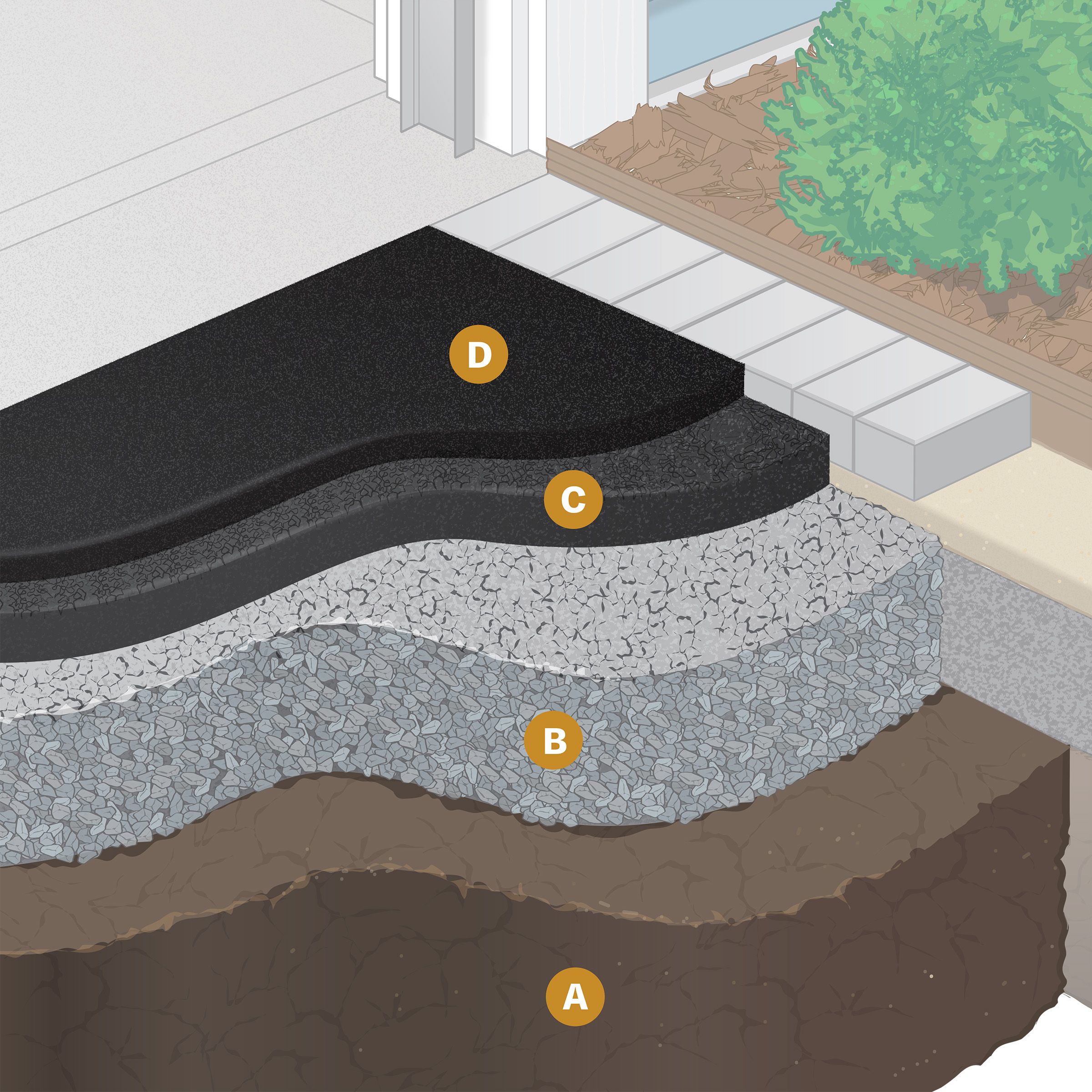
B) Sub-base: This should be 8 inches of crushed stone, which is a product that has been fractured so it has angular edges that interlock under compression. The best option is aggregate base course, also known as“crusher run,” a mix of stone of every size from about 3/8 inch down to stone dust, so it knits together extremely well. “The idea is to compact it so well that it’s watertight,” says This Old House mason Mark McCullough.
C) Binder course of asphalt: Depending on the depth of the aggregate base—every additional 3 inches of aggregate generally means 1 inch less of asphalt—the asphalt is ideally put down in two layers. The first is a binder course, which contains 2 1/2 inches of 5/8-inch aggregate. The binder course gets flattened and compressed with a steel roller and a vibrating plate compactor where the roller won’t go. It is then raked to give it a textured finish that will provide good adhesion with the next course.
D) Finish course of asphalt: The surface course, or topcoat, can be installed immediately, but if there will be construction vehicles using the driveway during a large-scale renovation, it’s common to wait until any home improvement projects are complete. This 1 1/2-inch layer contains 3/8-inch aggregate. It gets flattened and compressed with a steel roller and a vibrating plate compactor where the roller won’t go, and the edges get compacted using specialized hand tools for a flat, smooth, watertight finish.
Asphalt Driveway Installation Process
Understanding the installation process can help you make sure your contractor is following best practices. Here’s an overview of the typical steps involved in asphalt driveway installation.
Site Preparation and Excavation
The first step in the installation is preparing the site:
- Remove existing pavement or vegetation.
- Excavate to the required depth (typically 8-12 inches).
- Grade and slope the area for proper drainage.
- Compact the soil to create a stable base.
Laying the Foundation
A solid foundation is required for a long-lasting asphalt driveway:
- Install a geotextile fabric to prevent soil from mixing with the base material (optional).
- Add a layer of crushed stone or gravel (usually 8 inches thick).
- Compact the base material thoroughly using heavy machinery.
Applying and Compacting Asphalt Layers
The final stage involves laying and compacting the asphalt:
- Apply a 2. 5-inch binder course of larger aggregate asphalt.
- Compact the binder course with a steel roller.
- Apply a 1. 5-inch surface course of finer aggregate asphalt.
- Compact the surface course for a smooth, even finish.
Maintenance for Asphalt Driveways
Regular care can prevent minor issues from becoming major problems. Here are some best practices to keep your driveway in tip-top shape.
Regular Cleaning and Inspection
- Sweep or blow debris off the surface regularly.
- Clean oil and gas spills promptly to prevent staining.
- Inspect for cracks or damage at least twice per year.
Sealing Your Asphalt Driveway
Sealing protects your driveway from water damage and UV rays. Follow these tips:
- Wait at least six months after installation before first sealing.
- Clean the surface thoroughly before applying the sealer.
- Use a squeegee or brush to apply an even coat of sealer.
- Allow the sealer to dry completely before use (usually 24–48 hours).
Seal your driveway every 3-5 years or when the surface begins to look gray and worn.
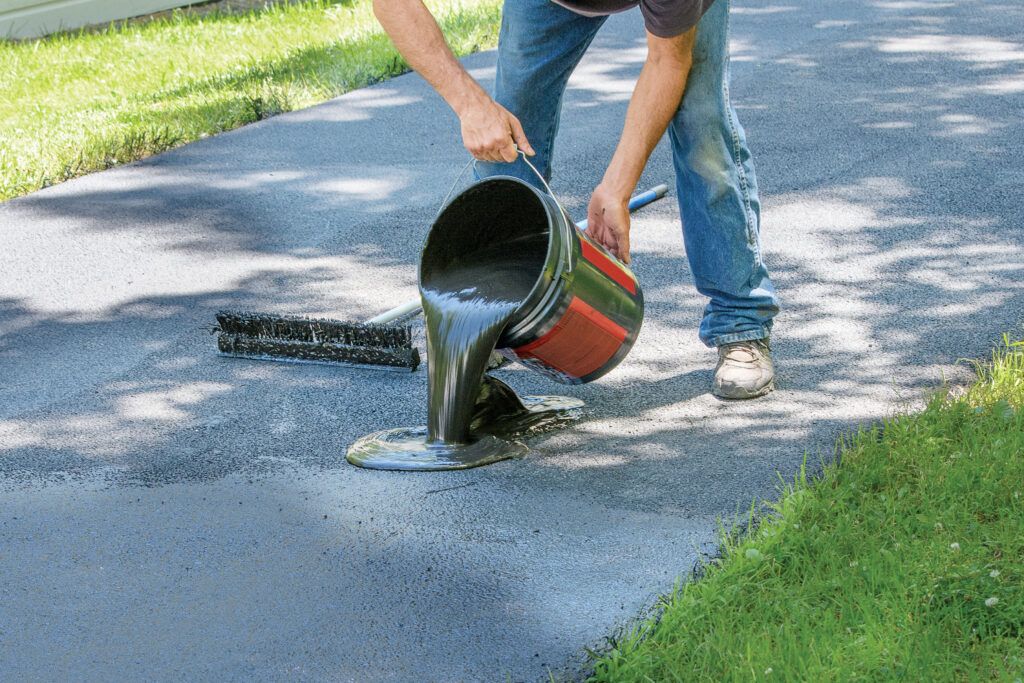
Addressing Cracks and Potholes
Repairing cracks and potholes promptly can prevent more extensive damage. Here’s how:
- Clean out debris from cracks or holes.
- Fill small cracks with a liquid crack filler.
- For larger cracks or potholes, use a cold asphalt patch material.
- Compact the filled area to establish a smooth surface.
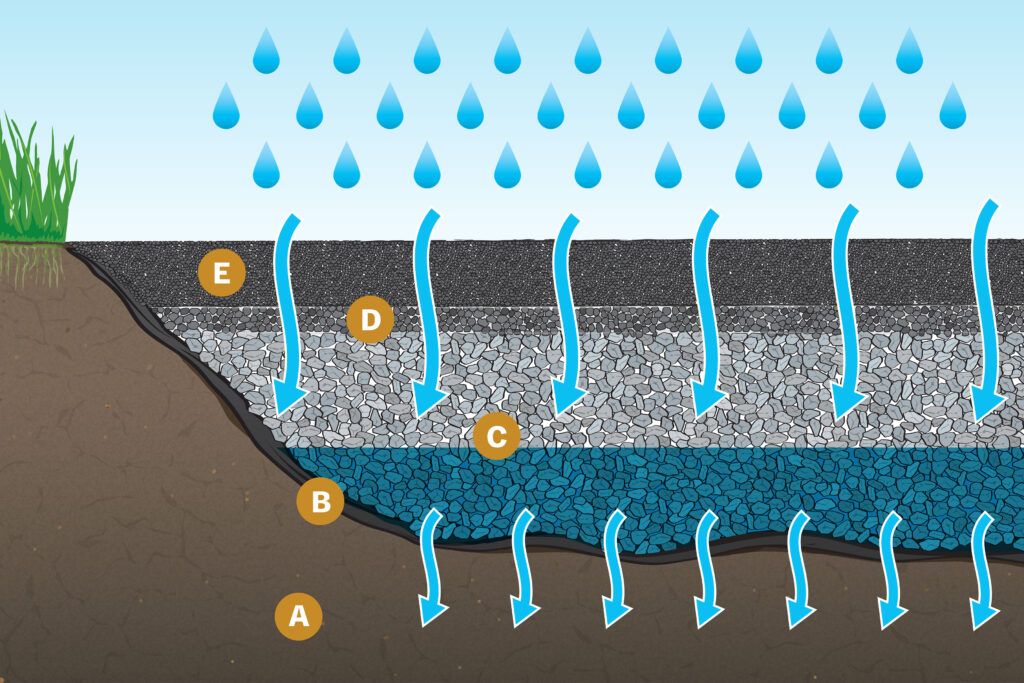
Improving Your Asphalt Driveway’s Appearance
Asphalt driveways are typically plain black, but there are ways to improve the appearance and better complement your home.
Decorative Edging Options
Add visual interest to your driveway with these edging ideas:
- Install brick or stone pavers along the edges.
- Create a stamped concrete border.
- Use contrasting colored asphalt for a decorative edge.
Landscaping Around Your Driveway
Thoughtful landscaping can soften the look of your asphalt driveway:
- Plant low-growing shrubs or flowers along the edges.
- Install landscape lighting to illuminate the driveway at night.
- Use decorative gravel or river rocks in adjacent areas.

Design Ideas
Here are some other ideas from McCullough to inspire your asphalt driveway project.
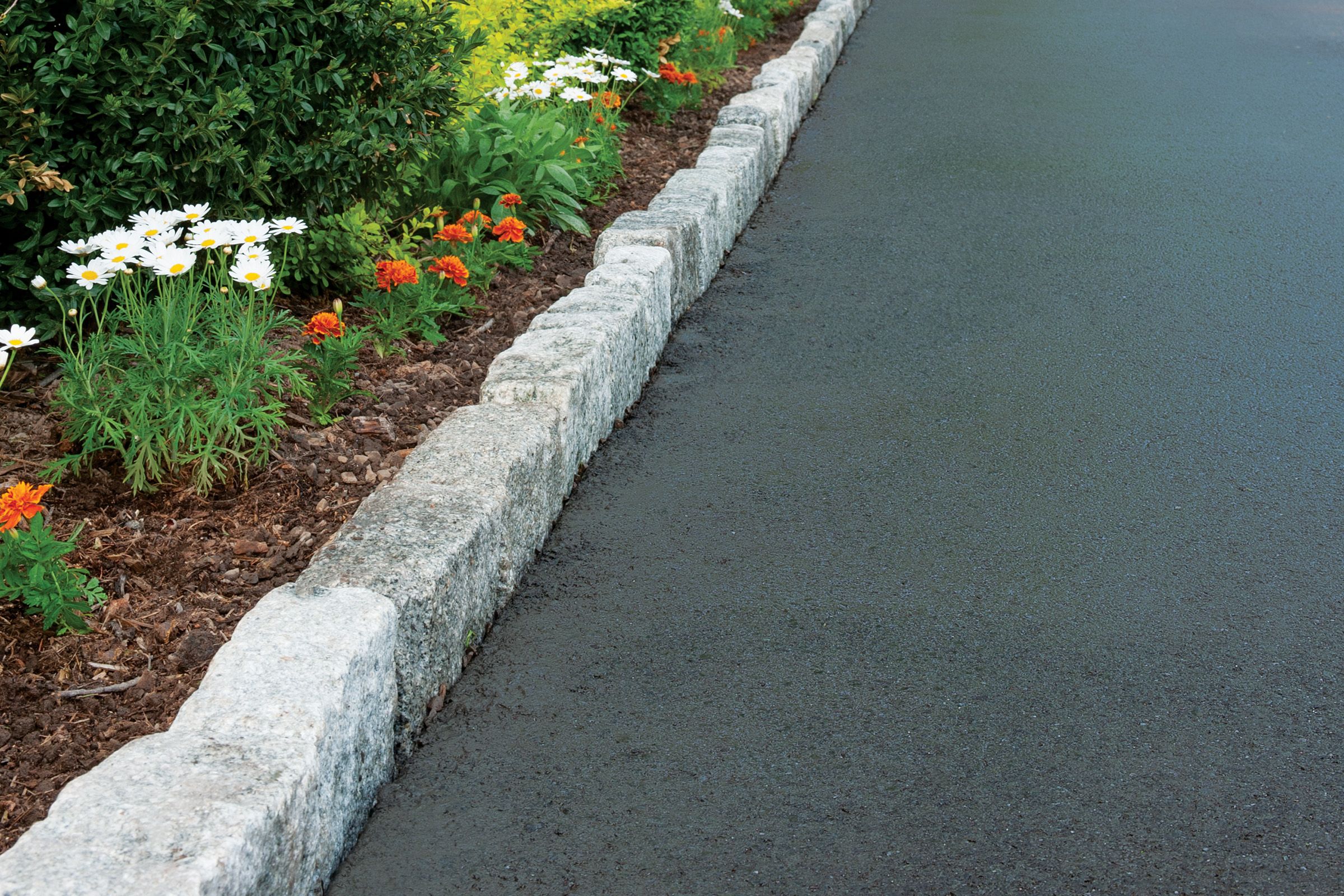


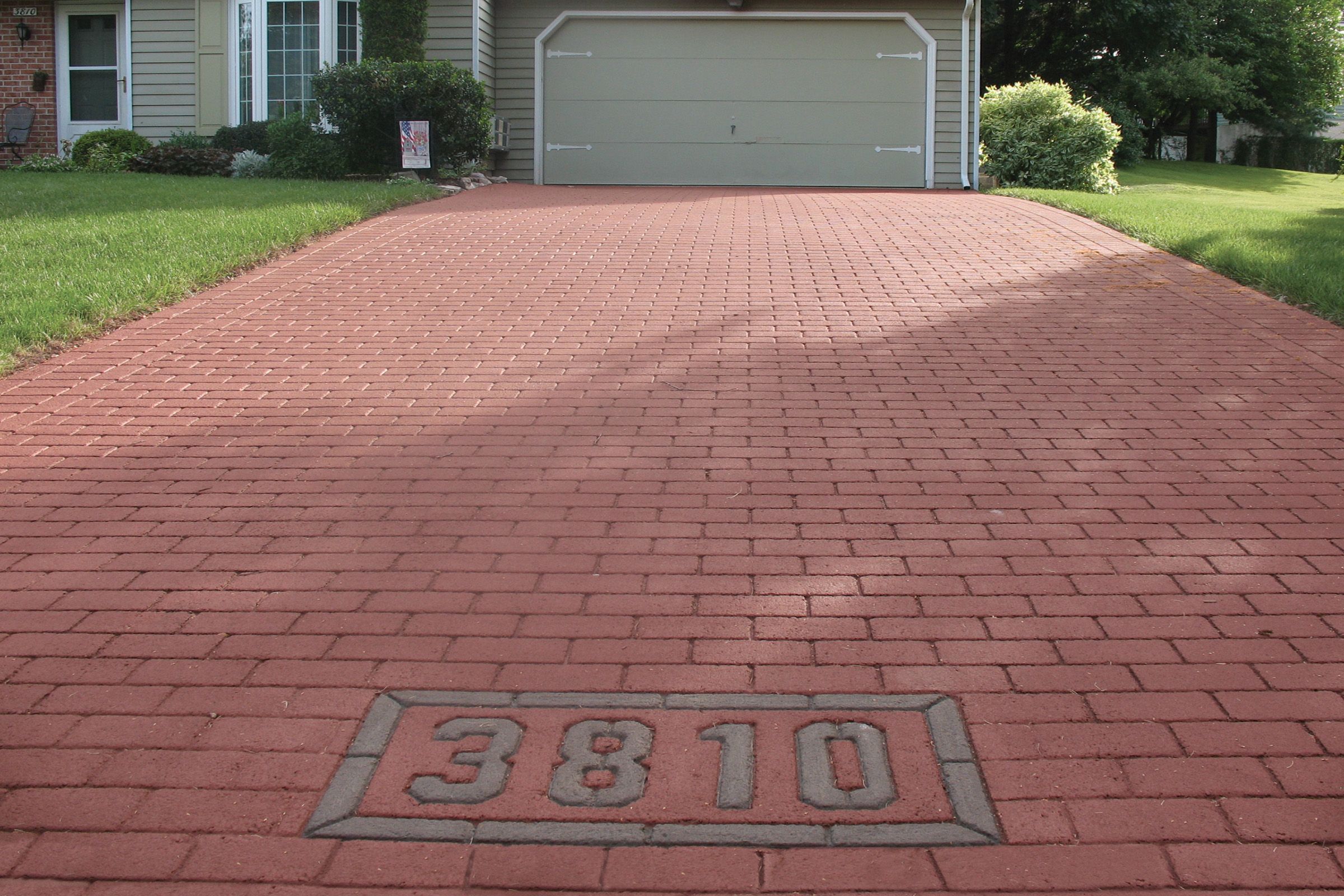




How To Fix Fissures and Divots in Asphalt Driveways
Here are McCullough’s steps for addressing cracks and other imperfections that may happen from wear and tear.
Fixing Fissures
To fix a crack, first clean out any debris, dirt, and plant material. If it’s a hairline crack, use an angle grinder with a masonry bit to widen the crack to the width of the blade. Fill the crack with a melt-in crack filler, which is a cord that you press into the crack and then melt with a propane torch. Cover that with a trowel on asphalt-patching material, and melt that in place with the propane torch.
Filling Divots
Home centers offer all the supplies you’ll need, and each product has its own specific instructions. To fill a driveway divot, you’ll want to cut even edges around the damaged area using a circular saw fitted with a masonry blade; then lay down a couple of inches of stone and compact it with a hand tamper. Add a wood form if the repair is at the edge of the driveway, then fill the void with a cold asphalt patch, which comes as a ready-to-use bagged product designed to provide a flexible repair. Make sure to overfill the hole by 2 to 3 inches, then compact it with a hand tamper. Finally, lay plywood over the top and drive the car over it a few times to compress the patch as much as possible.
Troubleshooting Other Common Asphalt Driveway Issues
Even well-maintained asphalt driveways can develop problems over time. Knowing how to address these issues can help extend your driveway’s lifespan.
Water Drainage Problems
Poor drainage can lead to premature deterioration of your driveway:
- Check for proper sloping away from your home and garage.
- Install a channel drain at the base of sloped driveways.
- Address any low spots that collect water.
Preventing and Repairing Edge Deterioration
The edges of asphalt driveways are often the first areas to show damage:
- Avoid driving on driveway edges.
- Install edge restraints during initial construction.
- Repair crumbling edges promptly with a cold patch material.
Weeds and Moss Growth
Weeds and moss can infiltrate asphalt driveways, especially if there are cracks or weak spots on the surface. Here’s how to keep your driveway clear from invasive growth:
- Apply moss liller: Use a moss control solution specifically designed for asphalt surfaces to eliminate and prevent moss growth.
- Regular weeding: Remove any visible weeds by hand or use a weeding tool that won’t damage the asphalt surface.
- Seal cracks: Make sure all cracks are sealed to prevent weeds and moss from taking root.
Eco-Friendly Options for Asphalt Driveways
As environmental concerns grow, more homeowners are looking for sustainable driveway options. Asphalt can be an eco-friendly choice when certain techniques and materials are used.
Porous Asphalt
Porous asphalt allows water to drain through the surface, reducing runoff. Here are some of the pros and cons:
- Helps recharge groundwater and reduce pollutants.
- May require more frequent maintenance to prevent clogging.
- Requires a deeper stone bed for water storage.
Recycled Asphalt Materials
Using recycled materials in your asphalt mix can reduce your environmental impact. Here’s what to know:
- Recycled asphalt pavement (RAP) can be incorporated into new mixes.
- Some mixes use recycled rubber from tires.
- These options can be just as durable as traditional asphalt.
Sustainable Installation Practices
You can also incorporate sustainable practices during installation process, such as the following:
- Implement energy-efficient equipment for construction and compaction procedures.
- Reduce material waste by calculating precise measurements and ordering the exact amount of asphalt needed.
- Use locally sourced materials to lower transportation emissions.
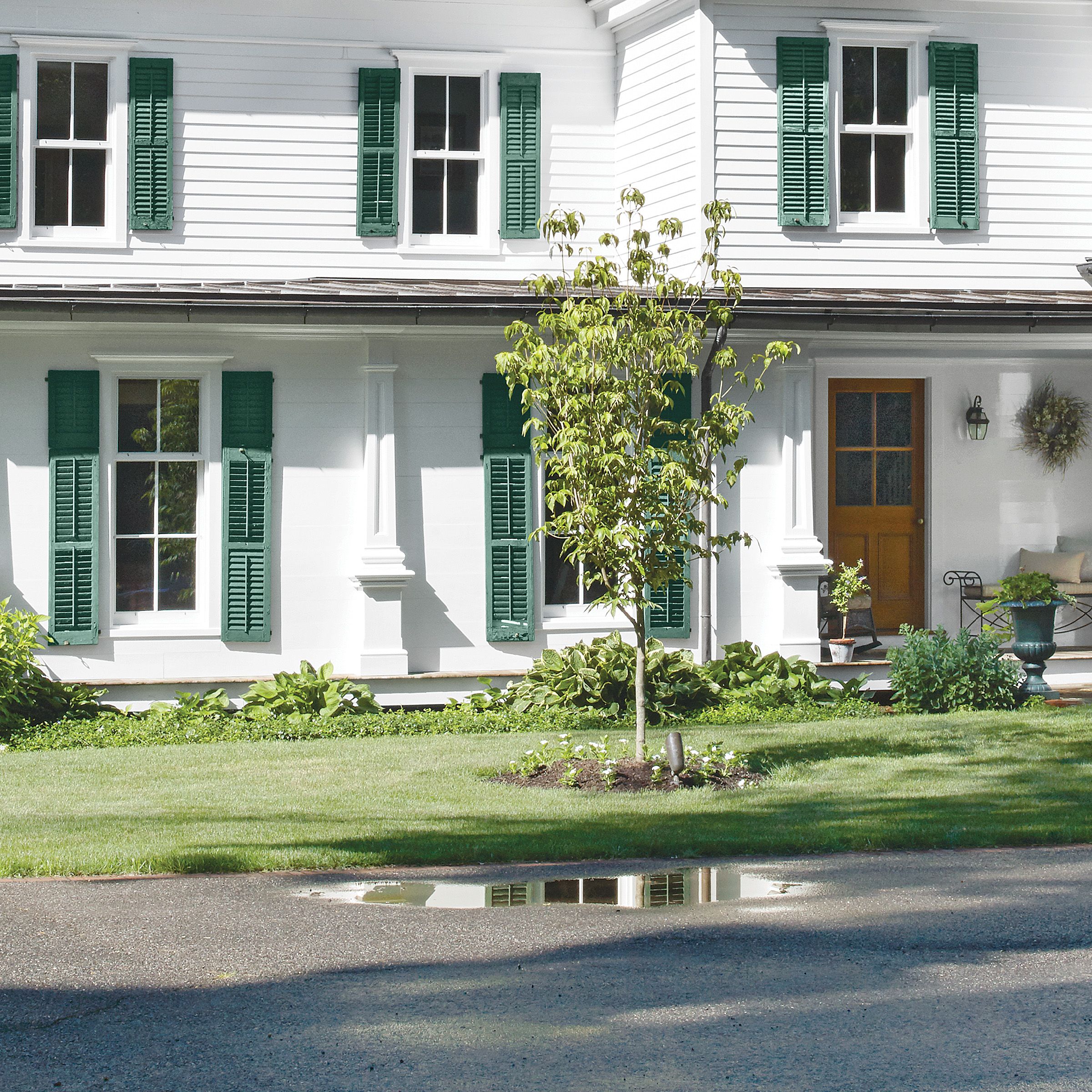
Winterizing Your Asphalt Driveway
Proper care in the winter is crucial for an asphalt driveway, especially in colder climates.
Protecting Against Freeze-Thaw Cycles
Freeze-thaw cycles can cause significant damage to asphalt. Here’s how to prevent it:
- Apply a winter-specific sealant for extra protection.
- Maintain proper drainage to prevent water accumulation.
- Make sure all cracks are sealed before winter.
Snow and Ice Removal Best Practices
Proper snow and ice management can also prevent damage. Follow these tips:
- Use plastic shovels instead of metal to avoid scratching the surface.
- Avoid using rock salt; opt for calcium chloride or magnesium chloride instead.
- Remove snow promptly to prevent compaction and ice formation.
Deicing Alternatives
Standard rock salt isn’t ideal for asphalt driveways because it’s corrosive Here are some safer alternatives:
- Calcium magnesium acetate: Effective and less harmful to the asphalt.
- Kitty litter: Can add traction in a pinch, though it may leave residue.
- Sand: Provides traction without causing damage, though it does not melt the ice.
Tips for Hiring a Paving Contractor for an Asphalt Driveway
Here are the steps McCullough recommends taking when looking for a good paving contractor.
Go to the Source
Don’t rely on the internet to find contractors. Visit a local, independent supply yard for asphalt (or whatever paving material you’re installing), and ask at the desk who the best residential contractors are. “They know who’s always got jobs, who’s keeping a big crew of experienced guys employed, who’s reliable about paying their bills,” McCullough explains.
Get the Facts
When you meet the contractors, they should be willing to take the time to talk through their process, explain in detail what they’ll use for a base course and how thick it will be, tell you whether they’ll use two courses of asphalt, and so on. And a contractor should be wearing boots, driving a truck, and have strong, calloused hands. “If he shows up in a Cadillac and dress shoes, this is not your guy,” McCullough says.
Talk to Clients
Ask for some recent customers—some with just-completed projects and some that are a few years old—and try to meet them in person to ask about working with the contractor and whether they would do so again while checking out the work firsthand.
Asphalt needs to be seal-coated, McCullough says. Not right after it’s installed, but within five years or so, the liquid asphalt gets depleted by the elements. “Once it goes from black to gray, it’s time to seal.” McCullough says the DIY products sold at the home center—bituminous or acrylic-based liquids that dry in place—are just as good as what the pros use. “The advantage of hiring it out is that you won’t be covered in asphalt sealer,” he adds.
The coating protects the asphalt from water and ultraviolet light; it also blackens the graying surface, which many people like. You’ll need to clip away an overhanging grass, clean the surface with a degreaser, paint primer over any stains, cut in the edges with a brush, and mop down the sealer over the rest of the driveway. Plan to throw away the clothes you wear, including your gloves, McCullough says.


